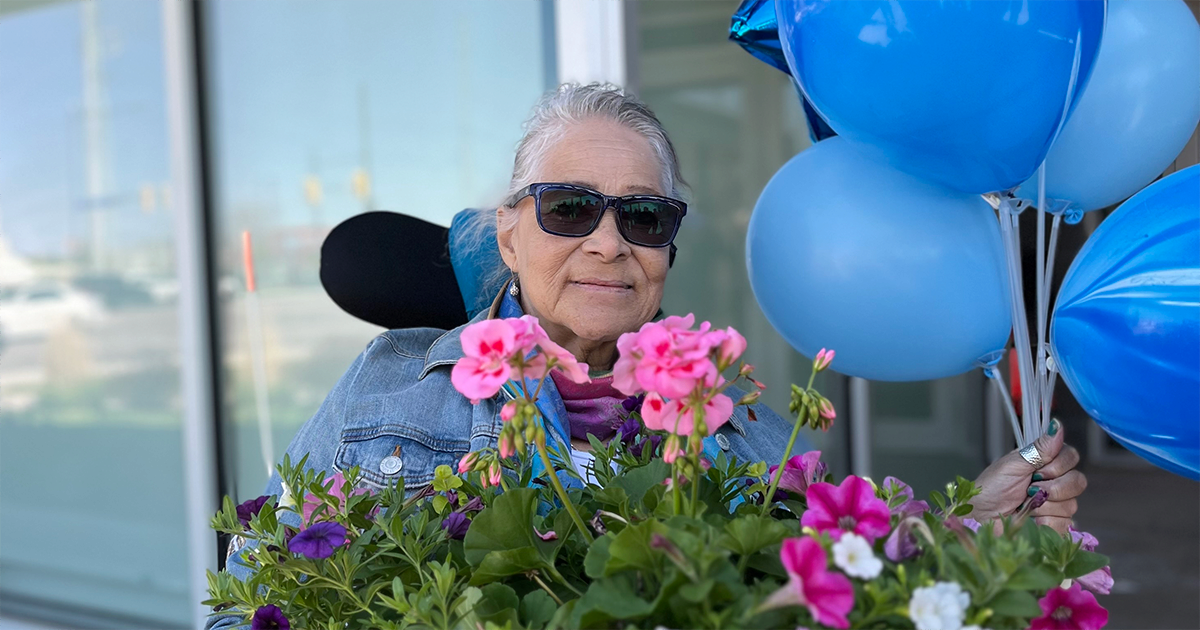When the last homeless count was conducted in Chilliwack, B.C., the results shocked the community: between 2014 and 2017, our homeless population had tripled, from 73 to more than 200 persons.
Homelessness is a problem that’s not unique to our community. Across Canada, the cost of housing has skyrocketed. The vacancy rate in Chilliwack is below one per cent—landlords know this and rental prices have gone up accordingly. Affordable housing is in short supply.
Our current shelter provides 11 beds (16 during extreme weather), and in October 2016, at the request of B.C. Housing, we opened up our soup kitchen to provide an additional 30 mats. But we always knew that wasn’t a long-term solution. We are working with B.C. Housing to build a brand-new shelter, but what could be done in the meantime?
The answer was a temporary, modular shelter, which was built on Salvation Army property in February and opened to clients in April. The shelter is made up of eight 12 x 60-foot sections, built off-site and then assembled here. Unlike a permanent structure, the modular shelter took only two days to assemble, plus a few months to complete the finishing work. The shelter has the capacity to house 46 individuals—we were full the second day after we opened.
One of the most exciting aspects of this project is that we’ve been able to move to a low-barrier service delivery model. Clients may arrive in any condition of intoxication, so long as they pass the safety risk assessment. We only have one rule: Be safe. We inspect bags as part of the intake process, wearing military-grade Kevlar gloves to protect staff from injury, and remove all items that may be illegal or used as a weapon. These items are then stored, if they are not illegal, and returned to the client upon discharge. We have two shipping containers to provide storage for client’s belongings while they are our guests.
We provide secure storage of client medication as well, both to guard from theft and the illegal sale of prescription drugs to other clients. Clients then come to staff to self-administer their own prescriptions, and this consumption is documented. All staff have been trained and equipped to administer the opioid overdose antidote naloxone.
The low-barrier model includes being pet friendly, so we have kennels for dogs, cats, birds and rodents, and could probably accommodate a reptile, too. For some clients, their pet is their best friend and if the pet can’t come, the client won’t come. That’s a barrier, so by welcoming the pets, we’re able to welcome the client and that’s the first point of engagement toward permanent change.
Along with pet-friendly rooms, there are two rooms with single beds, which can accommodate homeless couples, as well as transgender individuals who may need a little more privacy. The rooms have light-proof curtains in place of doors so clients cannot barricade themselves inside. We don’t require the clients to go to bed at a certain time, but do ask them to observe a quiet time from 11 p.m. to 7 a.m.
We have two case workers and one internal outreach worker who engage with clients to address their barriers to long-term housing, health and wholeness. They work with the clients to create case plans to mitigate those barriers, which may include referrals to other services such as mental health, welfare, addiction treatment, employment services or other assistance. Our shelter manager regularly provides pastoral care to the clients, in co-operation with the chaplaincy ministry I provide as community ministries director.
We are grateful for the opportunity to develop this expansion, even if it is temporary. It’s enabled us to evaluate our program and make significant improvements in our client service delivery. It has been a paradigm shift in many ways, moving from a rules-based approach to an individualized client-focused approach, but we believe this is consistent with the unconditional love of our Lord Jesus Christ for the lost. We trust that our new house of hope will do just that: bring hope to these broken lives.
Tim Bohr is the community ministries director at The Salvation Army Care and Share Centre in Chilliwack, B.C.
Welcome Home in Moncton, N.B., Addresses Housing Instability
The program provides support to bridge the gap between homeless and housed.
by Abbigail Oliver NewsFor people who are experiencing homelessness, the first few months after transitioning into housing can be challenging. The transition can come with financial stresses, food insecurity, trouble navigating systems and resources, and adapting to independent living. Welcome Home, a program launched by The Salvation Army’s community and family
Read More
Homeless Before Christmas
Unhoused at the age of 72, Brenda joined her voice with other “voices of homeless women” who were being helped by The Salvation Army.
Major Joy Angel Faith & FriendsBrenda shares her experience of becoming homeless at the age of 72 and how she was inspired to join her voice with other "voices of homeless women"who were being helped bt The Salvation Army.
Hope in the City Marks the Start of the 2025 Kettle Campaign
Territory-wide events help kick off the season of giving.
by Abbigail Oliver NewsIn November and December, community members, mission partners and supporters gathered in provinces across the territory to celebrate the kick-off of the holiday season and the opportunity to make a difference through The Salvation Army’s Christmas kettle campaign. Here is a snapshot of just a few of this year’s exciting Hope in the City
Read More










Leave a Comment